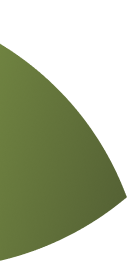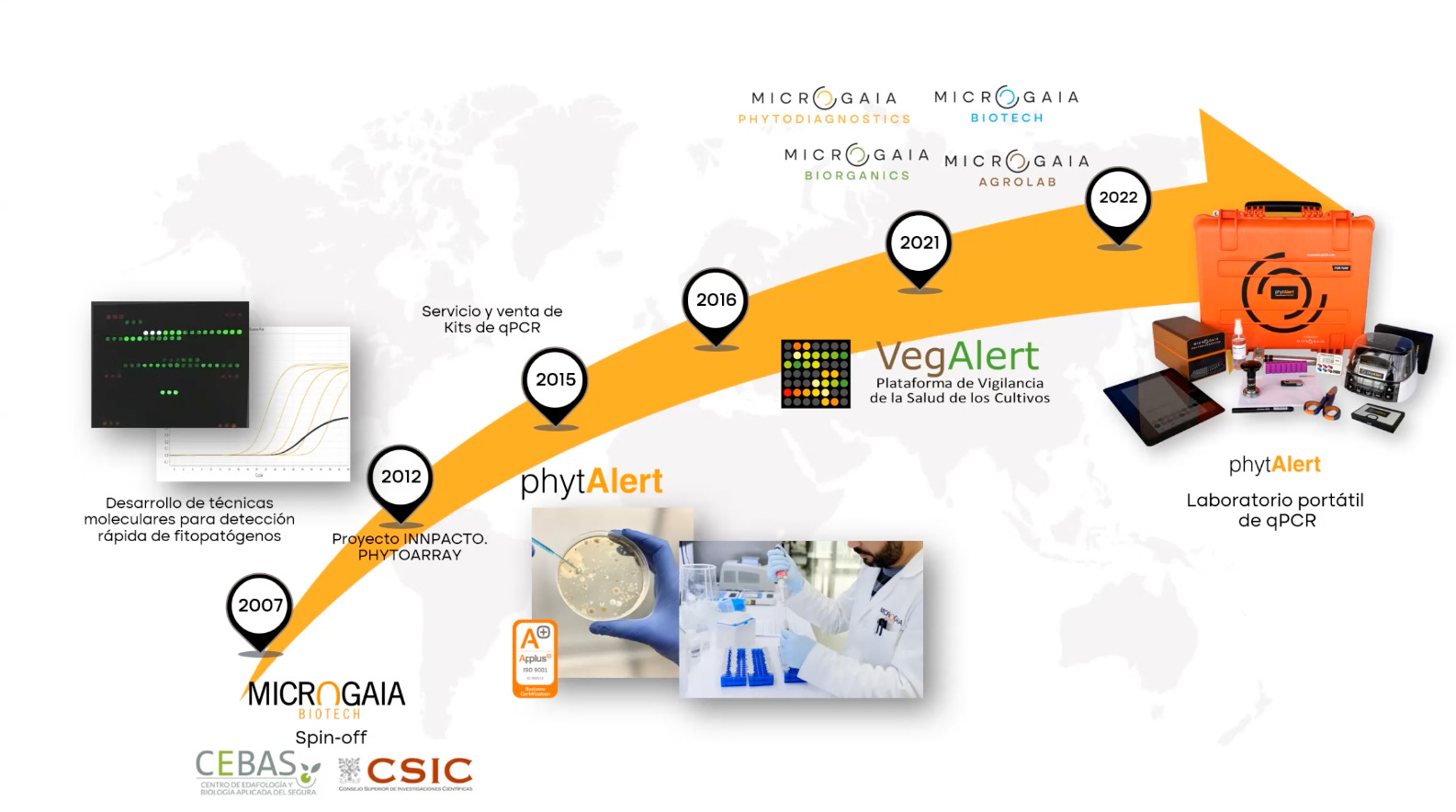Research and development of products and services for the detection and monitoring of microorganism populations, both those that can cause crop diseases and those that are beneficial for agricultural soils and plants, in order to reduce the risks and the need to use phytosanitary products and synthetic fertilizers.

Contact information
- info@microgaia.es
Web
- https://www.microgaia.eu/
Address
- Parque Científico de Murcia. Campus Universitario de Espinardo Ctra. Mdrid, Km. 388 30100 Murcia - SPAIN
Phone
- +34 968114051 - +34 627502535
Geographic area
MICROGAIA BIOTECH
Business

Project
Project
No entries
Products
Products
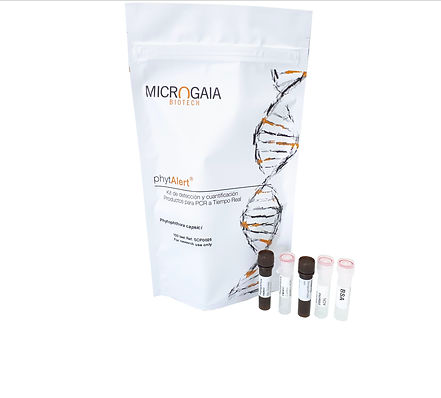
Mono-Specific Quantification Kit
Kit for the identification and quantification, in DNA copies/μl, of phytopathogenic microorganisms.
Kit Contents
- Problem microorganism primers and probe
- Internal control primers and probe
- DNA of the quantified pathogen to be used as a positive control to perform the quantification standard curve of DNA copies/μl
- Internal control DNA
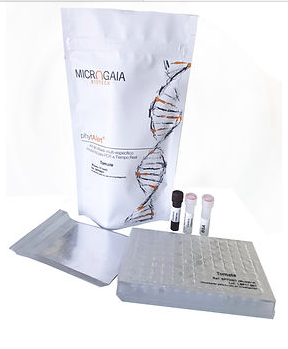
Multi-Species quantification kit by culture
Kits for the semi-quantitative detection of a set of phytopathogens, grouped by their impact on each crop.
Kit Contents
- Problem microorganism primers and probe
- Internal control primers and probe
- Internal control DNA
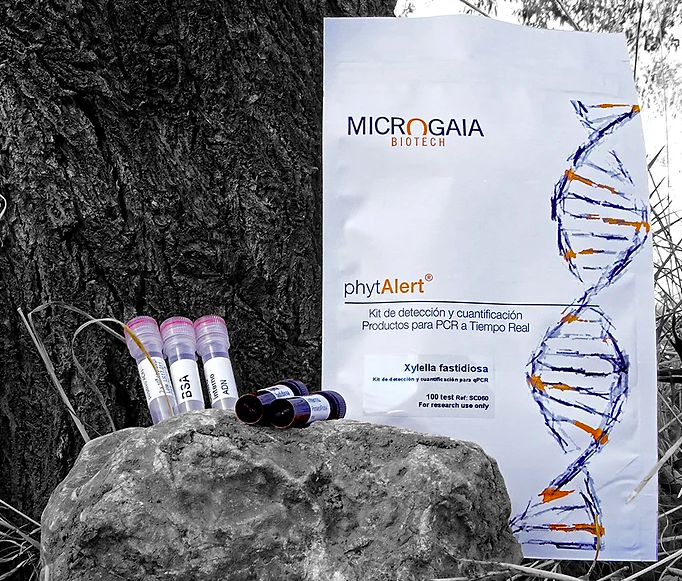
phyAlert. Early detection of Xylella fastidiosa
phytAlert Xylella is a molecular detection test capable of detecting Xylella fastidiosa long before symptoms appear.
Kits for the detection and quantification of Xylella fastidiosa, following EPPO 2018 recommendations (PM7 /24 [3]).
A solution to the detection of Xylella fastidiosa.
Able to detect the bacterium before symptoms appear.
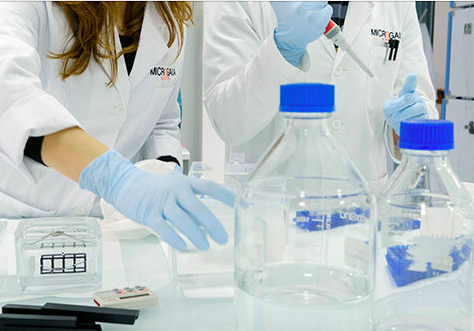
Rapid detection and early diagnosis of the main fungi and bacteria that affect crops.
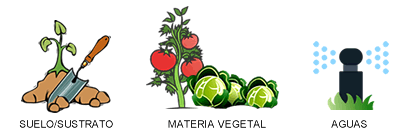



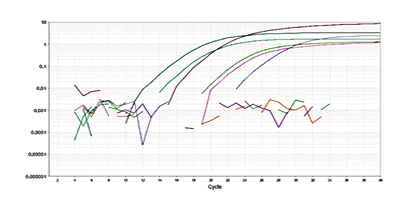
Detection by real-time qPCR with species-specific probes/primers.
Detection by real-time qPCR with species-specific probes/primers.
CHARACTERISTICS:
- Multidetection in a single analysis
- Detection of NON-culturable microorganisms
- Results in 24 hours
- Detection prior to the appearance of symptoms
- Quality Assurance
PROCESS DIAGRAM
1. Sampling by the customer:

2. Sending samples to the laboratory

3. Sample preparation and DNA extraction

4. Molecular analysis using PhytAlert®.

5. Interpretation of results

6. Reports sent in 24-48 Hours
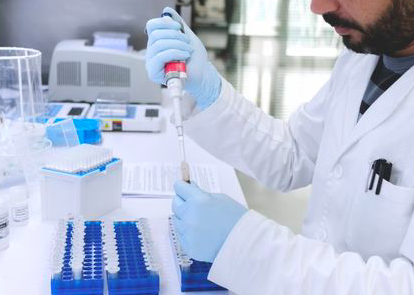
Identification of phytopathogenic species by isolation in pure culture and Sanger sequencing.

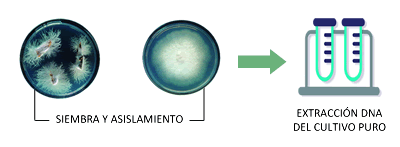
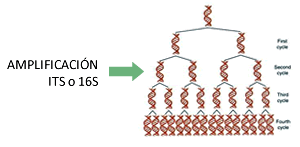
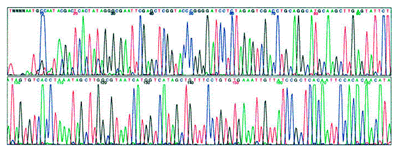
Identification of microorganisms isolated from plant material samples.
PROCESS DIAGRAM
1. Sample collection

2. Seeding and Isolation

3. ITS or 16S amplification

4. Sequencing and identification

